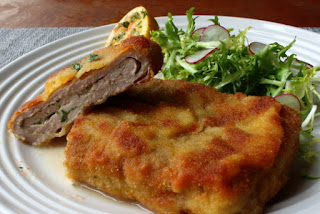But, eventually I realized the saucy texture was the key,
and that making it thicker would’ve ruined everything. Instead of too much
cheese piled up on your chip, we just get a beautiful, silky coating, and as soon
as you finish one, you can’t wait to dip another, and another, and another,
until there are no chips left.
Just be careful not to cook the mixture for too long after adding
the cheese. I turn the heat off a few seconds after the cheese melts, but you
can cook it for another minute or so if you do want it little thicker. However,
there’s a danger that your cheese will get grainy, and you’ll lose that luxurious, smooth mouthfeel.
Since this doesn’t get completely firm, even after cooling
down, you can make this ahead of time, and just leave it out, although that can
be a risky maneuver, as there may not be a lot left when your guests arrive. Either
way, whether you’re making this for a Super Bowl party, or any other kind of
party, including parties of one, I really do hope you give this a try soon.
Enjoy!
Ingredients for 12 Portions:
1/2 pound sharp cheddar cheese, shredded (about 2 1/2 to 3
cups)
1 tablespoon cornstarch
1 tablespoon butter
2 minced garlic cloves
1 bunch green onion, light parts only, sliced (save green
tops for garnish)
1 teaspoon kosher salt, plus more to taste
1/4 teaspoon ground chipotle
1/2 teaspoon cumin
1 can (4-oz) fire-roasted diced green chilies
1/2 cup diced seeded Roma tomatoes
1 can (12-oz) evaporated milk
1/4 cup finely chopped cilantro
pinch of cayenne
-->














